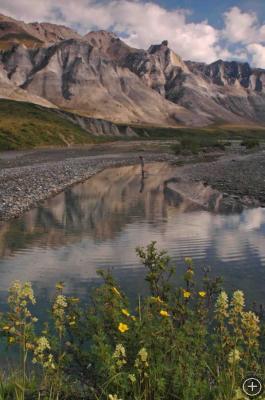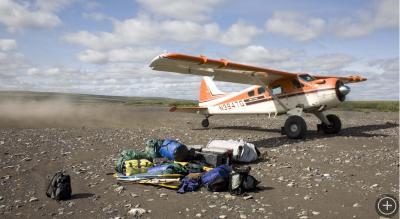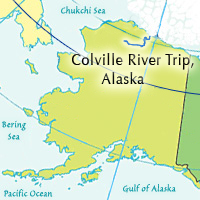Into the Wilderness, Part Deux
Journal Entry 9: Thursday, July 24, 2008
COLVILLE RIVER, ALASKA– Welcome back and thanks for tuning in for the second science adventure of the summer.
Scientifically, the premise and protocol on this trip is similar to the first trip, but this one is considerably longer – 18 days instead of 12 – and further north. We’ve got a number of sites scattered along 200 miles of the Colville River, in Northern Alaska, so we expect the coming days to be packed with science and boating.
We rode up the Dalton Highway (the “Haul Road”) from Fairbanks yesterday with a truck and driver from Horst Expediting. This morning brought clear weather in Coldfoot and an almost-prompt departure in a bush plane flown by Dirk Nickitsh at Coyote Air. The only hitch was that our gear didn’t fit in the 1953 DeHavillande Beaver plane – a common roadblock at this stage in the trip.
Hmm…kind of a bummer since our whole plan relies on floating our science gear down a river to access sample sites. We are underweight, but clearly oversized. After some debate and considerable consolidation, we kept the raft and left the inflatable canoe and some gear behind before the doors were closed on our tightly-packed gear and bodies.
The flight path took us from the southern edge of the Brooks Range obliquely across the mountains for about an hour-and-a-half, across Gates of the Arctic National Park. During the flight, newcomers to the Arctic and all were struck by the vastness of the place – a place with no evidence of mankind.
A gradual descent began as the mountains mellowed into the broad North Slope uplands, and we headed toward the headwaters of the Colville River. Dirk put us gently down on a sandbar adjacent to the river – a real treat after the portages of the previous trip – and we eagerly inflated and loaded the raft, pleased that we could manage the load without the boat left behind in Coldfoot.
Fours hours on the river later and we are at our first sampling site and campsite. Along the way, we marveled at the solitude and scale of the giant landscape, one that is slowly yielding its timeless qualities to the forces of climate.













Wow, that picture is stunning. How amazing to be able to experience “a place with no evidence of mankind”. I am curious as to what kind of inflatable canoe you were going to bring on the trip with you. I have been lookng at inflatable kayaks on this site: http://www.inflatablekayakworld.com
I would love to be able to paddle in some really remote areas.